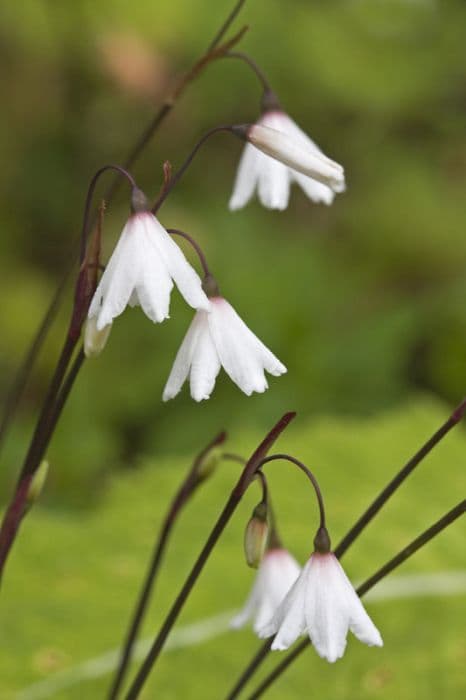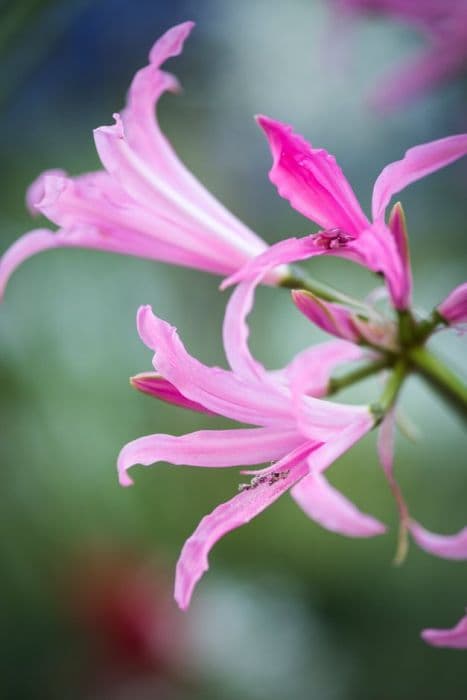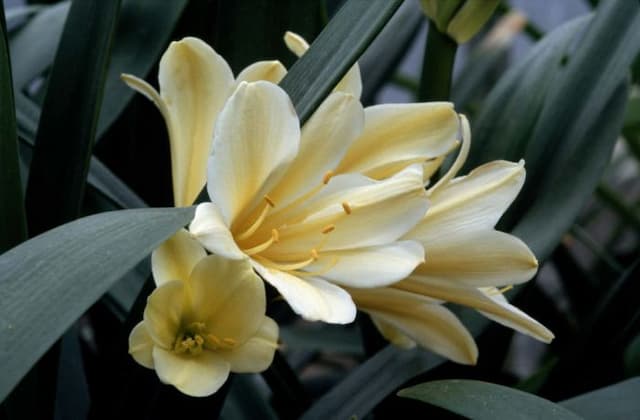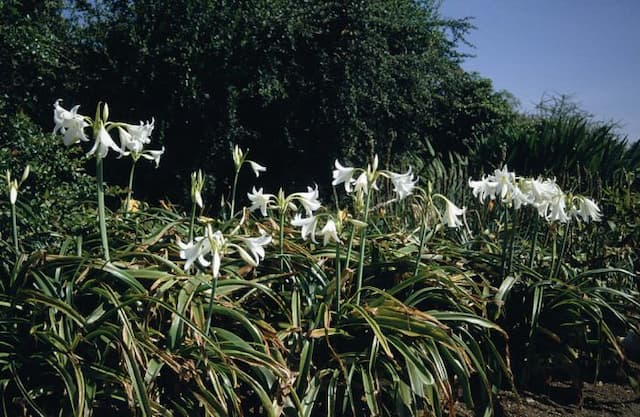Daffodil 'Hoopoe' Narcissus 'Hoopoe' (8)

ABOUT
'Hoopoe' is a bulbous perennial to 60cm tall, with stems bearing up to three fragrant flowers 5cm across, with rounded, yellow perianth segments and a small orange cup, over a long period in early and mid spring
About this plant
 Names
NamesFamily
Amaryllidaceae
Synonyms
Hoopoe Daffodil, Hoopoe Narcissus
Common names
Narcissus 'Hoopoe'
 Characteristics
CharacteristicsLife cycle
Perennials
Foliage type
Deciduous
Color of leaves
Green
Flower color
Yellow
Height
1-2 feet (30-60 cm)
Spread
0.5-1 foot (15-30 cm)
Plant type
Bulb
Hardiness zones
3-9
Native area
Europe
Benefits
 General Benefits
General Benefits- Aesthetic Appeal: Narcissus 'Hoopoe', commonly known as daffodil, has bright, cheerful flowers that can enhance the beauty of gardens and landscapes.
- Springtime Indicator: Daffodils are among the first flowers to bloom in the spring, symbolizing the end of winter and the arrival of warmer weather.
- Easy to Grow: Daffodils are hardy and easy to cultivate, making them suitable for gardeners of all skill levels.
- Naturalizing: These plants can spread and naturalize in an area, creating a larger display of flowers over time without much additional effort.
- Pest Resistance: Daffodils are generally resistant to pests and deer, reducing the need for chemical controls.
- Drought Tolerance: Once established, daffodils can tolerate periods of dryness, making them suitable for a variety of climates.
- Minimal Maintenance: They require very little care once they are planted, making them a low-maintenance option for busy gardeners.
- Longevity: Daffodils are perennial and can return year after year, offering a long-term addition to the garden.
- Versatility in Landscaping: These plants can be used in borders, containers, under trees, and in naturalized woodland settings.
- Cut Flowers: Daffodils make excellent cut flowers, bringing the freshness of spring indoors.
 Medical Properties
Medical PropertiesThis plant is not used for medical purposes
 Air-purifying Qualities
Air-purifying QualitiesThis plant is not specifically known for air purifying qualities.
 Other Uses
Other Uses- Cut Flower Arrangements: The Narcissus 'Hoopoe' is commonly used in cut flower arrangements for its distinctive shape and color, adding a unique touch to bouquets and centerpieces.
- Photography Subject: Due to its striking appearance, the Narcissus 'Hoopoe' often serves as a subject for photographers, especially those interested in botanical and nature photography.
- Wedding Decorations: The flowers can be used in wedding bouquets or as decoration, symbolizing new beginnings and the arrival of spring.
- Artistic Inspiration: Artists may use the Narcissus 'Hoopoe' as an inspiration for their artwork, including paintings, drawings, and textiles.
- Garden Design: This variety can be used as a focal point in garden design, especially in springtime displays and rock gardens.
- Eco-Friendly Confetti: Petals of the Narcissus 'Hoopoe' can be dried and used as biodegradable confetti for celebrations or events.
- Dye Production: The colorful pigments from the petals could potentially be used to create natural dyes for fabrics or crafts.
- Theme Gardens: Narcissus 'Hoopoe' can be included in thematic gardens, for example, ones that are structured around a specific color scheme or seasonal feature.
- Culinary Presentations: While the plant is not edible, petals can be used to adorn food platters or drinks for decorative purposes, after ensuring safety measures are taken to prevent ingestion.
- Memory Gardens: Because of their association with remembrance in certain cultures, these flowers can be planted in memory gardens dedicated to loved ones.
Interesting Facts
 Feng Shui
Feng ShuiNarcissus is not used in Feng Shui practice.
 Zodiac Sign Compitability
Zodiac Sign CompitabilityNarcissus is not used in astrology practice.
 Plant Symbolism
Plant Symbolism- Rebirth and New Beginnings: The Narcissus 'Hoopoe' blooms in early spring, symbolizing the rebirth of nature and the onset of a new year. It's often associated with festivals that celebrate renewal.
- Pride and Vanity: In Greek mythology, the young Narcissus fell in love with his own reflection, leading to his demise. As such, the flower that bears his name represents self-love and narcissism.
- Wealth and Prosperity: Some cultures view the Narcissus 'Hoopoe' as a symbol of wealth and success due to its bright appearance and its tendency to bloom abundantly.
- Hope: The Narcissus is often a symbol of hope, especially considering its ability to push through the last snows of winter to bloom with vigor each year.
 Water
WaterDaffodils, including the Narcissus 'Hoopoe', require consistent moisture during their growing season but do not like to remain soggy. They should be watered deeply once a week, providing about 1 inch of water each time, or approximately 0.6 gallons per square yard of soil. After blooming has finished and their foliage has begun to yellow, you can gradually reduce watering as the plants go dormant. It's crucial to avoid overwatering to prevent bulb rot. During the dormant season in summer, they typically require no additional watering unless it's exceptionally dry.
 Light
LightDaffodils prefer full sunlight to thrive; however, they can tolerate partial shade. The best spot for Narcissus 'Hoopoe' would be an area that receives at least 6 hours of direct sunlight each day. If you are growing them indoors, a south-facing window is ideal to provide them with ample light.
 Temperature
TemperatureDaffodils are hardy and can survive temperature fluctuations; the Narcissus 'Hoopoe' is no exception. They can withstand winter temperatures down to about 15°F but prefer a daytime range between 50°F and 70°F during their growth period. It's best to protect them from extreme heat, as temperatures consistently above 90°F may affect their growth negatively.
 Pruning
PruningPruning is not a common requirement for daffodils like the Narcissus 'Hoopoe'. The only 'pruning' involves deadheading the spent blooms after flowering to maintain appearance and prevent seed production. Removing the faded flowers prevents the plant from expending energy on seed production. It is important, however, to leave the leaves until they yellow and wither, which usually occurs about 6 weeks after flowering, as they provide the nutrients for the bulbs for next year's growth.
 Cleaning
CleaningNot needed
 Soil
SoilThe Daffodil 'Hoopoe' thrives best in well-draining soil, rich in organic matter, with a pH range of 6.0 to 7.0. A soil mix consisting of equal parts loam, sand, and compost or well-rotted manure is ideal, which will provide the essential nutrients and proper drainage that daffodils prefer.
 Repotting
RepottingDaffodils, including the 'Hoopoe' variety, are typically grown from bulbs and do not require frequent repotting. Generally, you should repot or divide the bulbs every 3 to 5 years to prevent overcrowding and to maintain vigorous growth.
 Humidity & Misting
Humidity & MistingDaffodils like the 'Hoopoe' variety are tolerant of a range of humidity conditions and do not require high humidity levels. They thrive outdoors in natural humidity levels and do not demand special humidity considerations when grown indoors.
 Suitable locations
Suitable locationsIndoor
For Daffodil 'Hoopoe', ensure bright light, cool temps, and a pot with drainage.
Outdoor
Plant 'Hoopoe' Daffodil bulbs in fall, 6 inches deep, in sun or part shade.
Hardiness zone
3-9 USDA
 Life cycle
Life cycleNarcissus 'Hooppetticoat' begins its life as a buried bulb, which is a dormant stage that survives through winter and typically consists of layers of fleshy scales that store nutrients. In late winter to early spring, the bulb breaks dormancy and sprouts, sending up linear leaves and a flower stalk topped with a distinctive trumpet-shaped flower that is often bright yellow. After blooming, which may last for several weeks, the plant undergoes photosynthesis to replenish the bulb's energy reserves. Once the flowering has finished, the above-ground parts of the plant die back, and the Hoop Petticoat Narcissus enters a period of dormancy during the hotter summer months. During autumn, the bulb may produce offsets, leading to the formation of new bulbs that will eventually grow into mature plants. Over time, these bulbs can form impressive clumps or drifts as the plant propagates and naturalizes in suitable conditions.
 Propogation
PropogationPropogation time
Spring-Early Summer
Propogation: The Narcissus 'Hoopoe', commonly known as a variety of Daffodil, is typically propagated through division, which is best done in the late summer to fall after the foliage has died back. To propagate by division, carefully lift the bulbs with a spade, ensuring a good amount of soil is kept around the roots to minimize disturbance. Gently separate the bulbs, which should naturally split apart at the base, leaving any smaller bulbs attached to the parent to encourage growth. Once separated, you can replant the bulbs at a depth of around 6 inches (approximately 15 centimeters) and around 3 to 6 inches (about 7.5 to 15 centimeters) apart from each other to give them sufficient space to grow. Water the new plantings thoroughly to settle the soil around the bulbs and to help re-establish them in their new locations.









